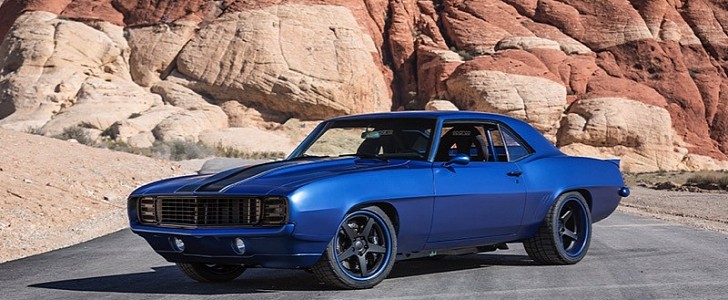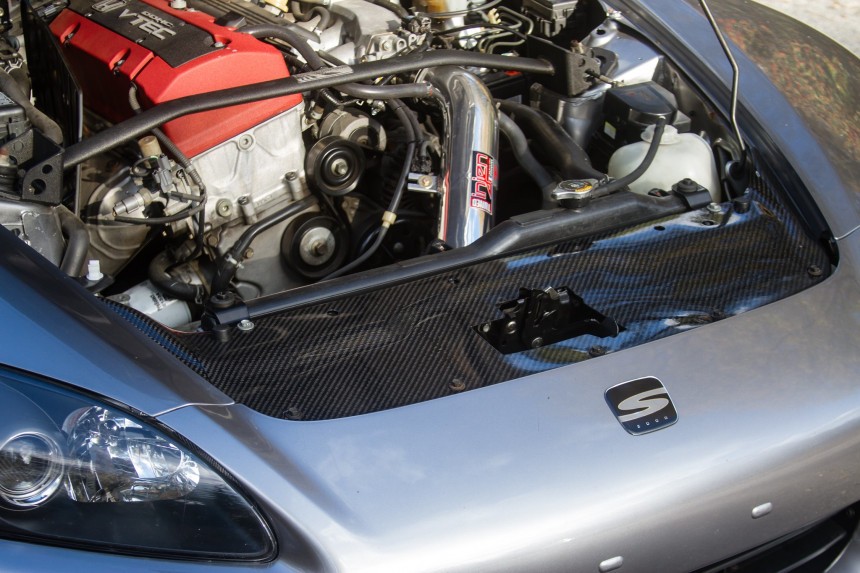Tuning the car in an old-fashioned way in your garage might be done even today. That would work up to a certain level, where a skilled professional mechanic will have to step in. But up to that level, it is a job that two pairs of hands and a complete set of tools can do without any problems.
We are starting the tuning month here at autoevolution, and we want to raise a glass for all of you who did upgrade your cars. We would love to see your modified rides, so feel free to send me an email with your upgraded vehicle. As for me, all I can tell is that the only car I ever had and left it (almost) stock was a Jeep Cherokee XJ. I didn't modify it since I didn't intend to keep it too long. Yet, thanks to a burglar, I did have to change the stereo, though...
So, step 1 is to change the wheels and tires. Check an online tire calculator. You might not want to put 30" wheels on a car that could barely handle 18" size. When changing the alloys, there are a few essential things: diameter, offset, and wheel width. When combining these, the end result should be a better-handling vehicle. Go for the lightest alloys you can get. A heavy wheel will require more torque to spin and longer stopping distances. Also, at this step, you may go for some spacers, but be careful to not push the wheels outside the wheel-arch and secondly, if you install thicker than 5 mm (0.2") spacers, use longer lug-nuts.
For step two, there was always a considerable debate: stopping distance or handling? I would go for a better suspension this time since I'm more into high-speed cornering than straight-line acceleration. Nevertheless, as long as you didn't upgrade your engine, stock brakes should be fine.
Choosing the correct setup for a suspension might be a tricky part. I would go for an adjustable coil-over kit, which will allow you to stiffen or loosen the suspension travel and the bound and rebound rate. However, don't even think that stiffer always means better. If the car is too stiff, it will bounce, and you'll lose traction on the next bump on the road. Also, if you use the vehicle on regular streets, you might not want to feel every crack in the blacktop and every dime lost on the road.
We're not done with the suspension. Adding a camber kit might be a good idea if you are running the car on tracks. If you are just using it on regular roads, that will be primarily for a bragging subject at a car meet. As long as you have the right wheels and a decent coilover suspension, you won't need it. What you can do, though, is to put a strut bar between the car's strut towers. This will stiffen your ride and make it handle better during high-speed cornering. It is something you can do in your garage. Just order the right parts, and they'll fit like a glove. But remember: install it with your car on jack stands, not with the wheels on the ground. Better of, remove the wheels.
A lowering kit is always a good idea since it will lower the car's center of gravity. Thus, it will decrease the lateral g-forces and increase the handling. Remember, folks, springs and dampers might match, so you'll have the best setup. Slightly stiffer shocks on stock springs might work. Still, stiffer springs on regular dampers will ruin comfort without a noticeable increase in handling. At this step, you might decide whether you'd like to use that vehicle on the streets or not. If you will drive it often, change the bushings with new ones. If not, replace them with polyurethane ones. That will completely upgrade the car's handling but ruin the comfort as well.
We're not done with the suspension yet. After changing wheels and tires and placing a new coil-over kit on the car, there is something else you can do: install a different torsion bar. This piece helps the vehicle in the corners to not lean too much. Basically, if the outer suspension is compressed, it will transfer some pressure to the inner side. Thus, the car will lean (or roll) less. But installing the most rigid anti-roll bar is not a good idea. That might work on completely smooth tarmac, which everybody knows you can't find on regular roads.
On off-road cars, those anti-roll bars are often completely eliminated. That will give more suspension travel and thus better grip. For a street vehicle, that's not a good idea either since the vehicle will lean too much on the outside due to lateral g-forces and might lead to an unpleasant ride and dangerous situations.
So, step 1 is to change the wheels and tires. Check an online tire calculator. You might not want to put 30" wheels on a car that could barely handle 18" size. When changing the alloys, there are a few essential things: diameter, offset, and wheel width. When combining these, the end result should be a better-handling vehicle. Go for the lightest alloys you can get. A heavy wheel will require more torque to spin and longer stopping distances. Also, at this step, you may go for some spacers, but be careful to not push the wheels outside the wheel-arch and secondly, if you install thicker than 5 mm (0.2") spacers, use longer lug-nuts.
Choosing the correct setup for a suspension might be a tricky part. I would go for an adjustable coil-over kit, which will allow you to stiffen or loosen the suspension travel and the bound and rebound rate. However, don't even think that stiffer always means better. If the car is too stiff, it will bounce, and you'll lose traction on the next bump on the road. Also, if you use the vehicle on regular streets, you might not want to feel every crack in the blacktop and every dime lost on the road.
We're not done with the suspension. Adding a camber kit might be a good idea if you are running the car on tracks. If you are just using it on regular roads, that will be primarily for a bragging subject at a car meet. As long as you have the right wheels and a decent coilover suspension, you won't need it. What you can do, though, is to put a strut bar between the car's strut towers. This will stiffen your ride and make it handle better during high-speed cornering. It is something you can do in your garage. Just order the right parts, and they'll fit like a glove. But remember: install it with your car on jack stands, not with the wheels on the ground. Better of, remove the wheels.
We're not done with the suspension yet. After changing wheels and tires and placing a new coil-over kit on the car, there is something else you can do: install a different torsion bar. This piece helps the vehicle in the corners to not lean too much. Basically, if the outer suspension is compressed, it will transfer some pressure to the inner side. Thus, the car will lean (or roll) less. But installing the most rigid anti-roll bar is not a good idea. That might work on completely smooth tarmac, which everybody knows you can't find on regular roads.
On off-road cars, those anti-roll bars are often completely eliminated. That will give more suspension travel and thus better grip. For a street vehicle, that's not a good idea either since the vehicle will lean too much on the outside due to lateral g-forces and might lead to an unpleasant ride and dangerous situations.












